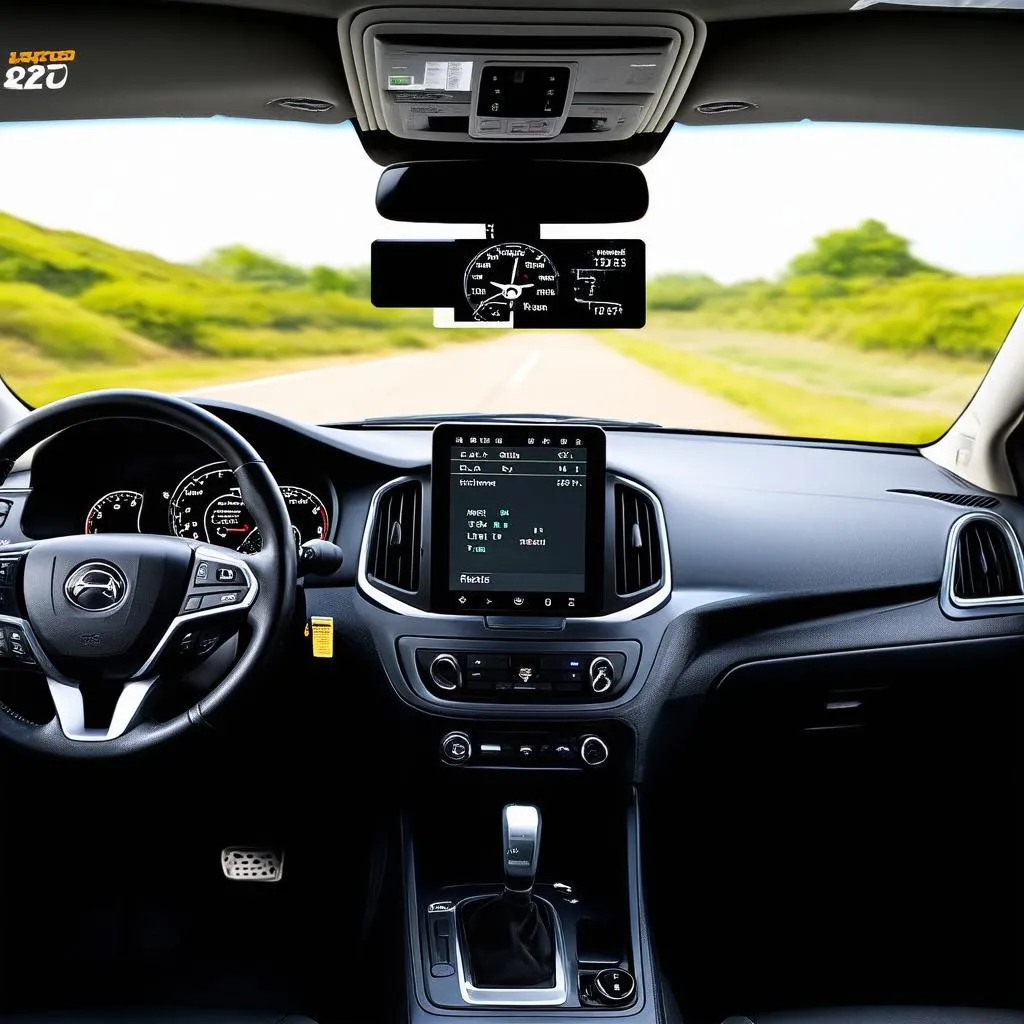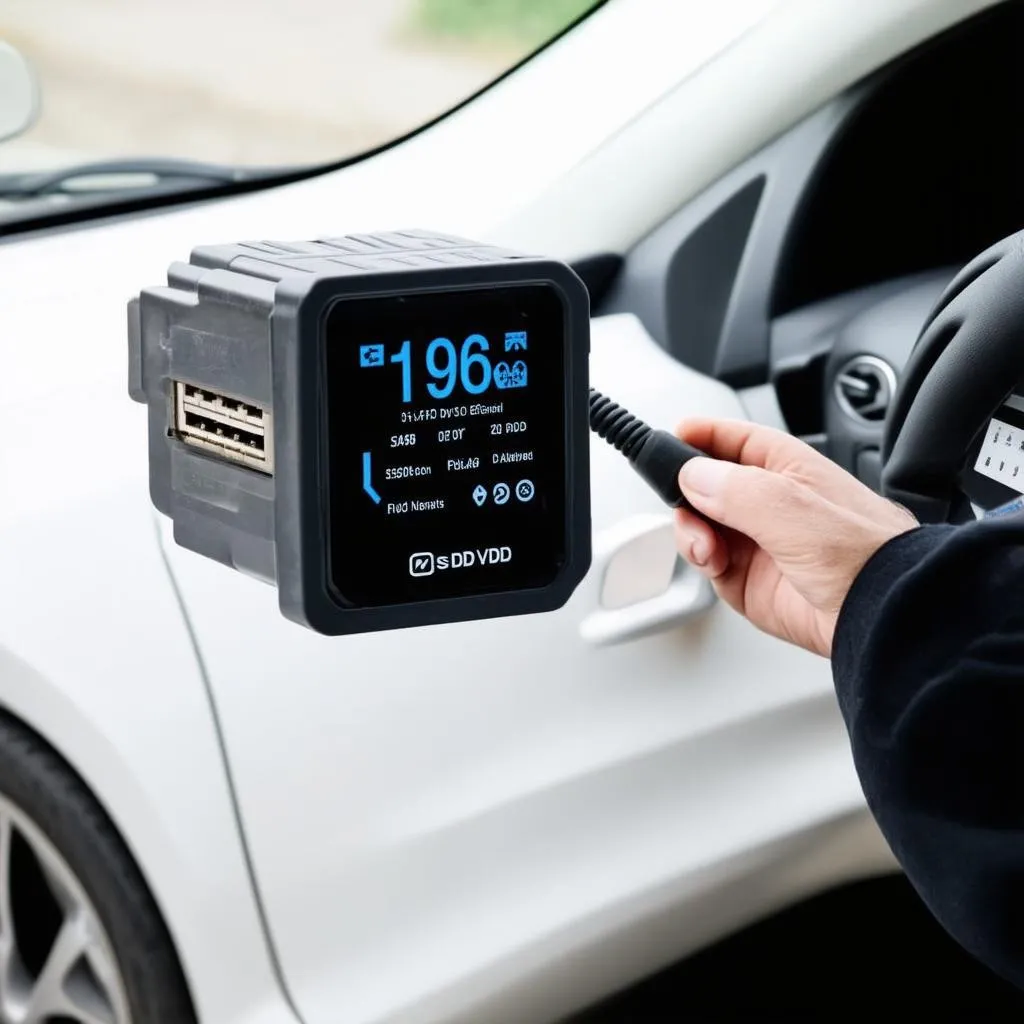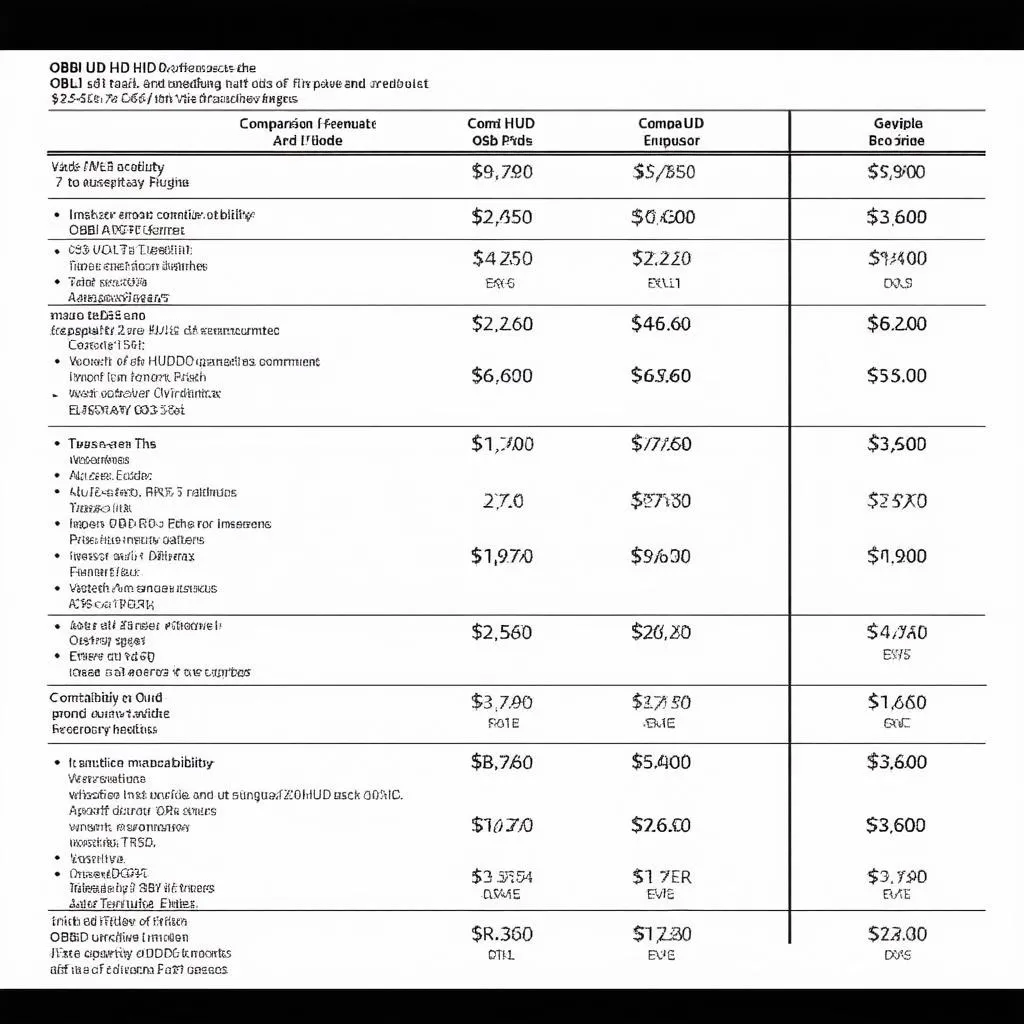Have you ever wished you could see your car’s vital information without taking your eyes off the road? That’s where an Obd Ii Heads Up Display (HUD) comes in. It’s like having a mini dashboard projected right onto your windshield, providing you with crucial data at a glance.
Understanding the Obd Ii Heads Up Display
Let’s break down what an OBD II HUD is and why it’s becoming increasingly popular among drivers.
The Power of Data at Your Fingertips
Imagine driving down the highway, and suddenly your engine light flashes. You’re probably thinking, “What’s wrong with my car?” An OBD II HUD eliminates that guessing game. It connects to your car’s On-Board Diagnostics (OBD) port, a standardized connector found in most vehicles manufactured since 1996, allowing you to access a wealth of information, including:
- Speed: Keep your speed under control and avoid unwanted fines.
- RPM: Monitor your engine’s performance and know when to shift gears for optimal fuel efficiency.
- Fuel Level: Say goodbye to unexpected fuel stops and get a clear picture of your fuel consumption.
- Engine Temperature: Detect overheating issues early and prevent potential damage.
- Trip Distance: Keep track of your mileage and plan your road trips with ease.
- Diagnostic Trouble Codes (DTCs): If a fault occurs, the HUD will display the relevant error code, allowing you to quickly identify the issue and address it accordingly.
More Than Just Data – A Safety Enhancement
While the data provided by an OBD II HUD is undeniably valuable, it’s the safety implications that truly elevate its importance. Imagine this scenario: you’re driving at night, your headlights are dimmed, and a deer suddenly appears on the road. With an OBD II HUD, you can see your speed and react more quickly, potentially avoiding a collision. This enhanced awareness can make a significant difference in preventing accidents, especially in challenging driving conditions.
The Benefits of Using an Obd Ii Heads Up Display
Enhanced Driving Experience
- Real-time Information: No more glancing down at your dashboard, keeping your eyes focused on the road.
- Increased Safety: Stay aware of crucial data and react promptly to potential hazards.
- Improved Fuel Efficiency: Optimize your driving habits and save money at the pump.
- Personalized Driving Experience: Customize the information displayed on your HUD to your preferences.
What Are You Waiting For?
The advantages of using an OBD II HUD are numerous, making it a compelling investment for any driver who prioritizes safety, convenience, and driving enjoyment.
Frequently Asked Questions About OBD II HUDs
1. How do Obd Ii Heads Up Displays work?
OBD II HUDs work by connecting to your car’s OBD II port, which is typically located under the dashboard. They receive and process data from the vehicle’s onboard computer, displaying it on a small screen that projects onto your windshield.
2. Are all OBD II HUDs compatible with all vehicles?
Not all HUDs are compatible with all vehicles. It’s crucial to check the compatibility information before purchasing a HUD to ensure it works with your car’s OBD II protocol. The HUD should support your vehicle’s protocol, and you may need to select the correct model for your specific car make and model.
3. What are the different types of Obd Ii Heads Up Displays?
OBD II HUDs come in various forms, including:
- Standalone HUDs: These are separate devices that plug into your car’s OBD II port and display information on a built-in screen.
- Smartphone-connected HUDs: These HUDs use your smartphone’s GPS and sensors to provide data and project it onto your windshield.
- Integrated HUDs: Some newer vehicles come equipped with factory-installed HUDs that are seamlessly integrated with the vehicle’s dashboard and infotainment system.
4. How do I install an Obd Ii Heads Up Display?
Installing a standalone OBD II HUD is usually a simple process:
- Connect the HUD: Plug the HUD into your car’s OBD II port.
- Power on: Turn on the HUD and ensure it’s properly powered.
- Mount the screen: Securely mount the screen to your dashboard using the provided mounting accessories.
- Calibrate: Some HUDs may require calibration to ensure the projected image is properly aligned with your windshield.
5. Can I use an Obd Ii Heads Up Display to diagnose car problems?
While an OBD II HUD can display Diagnostic Trouble Codes (DTCs) that indicate potential issues, it’s not a replacement for professional diagnostics. If your car’s Check Engine Light illuminates, it’s best to have it inspected by a qualified mechanic.
 OBD II HUD screen displaying vehicle data
OBD II HUD screen displaying vehicle data
6. What are some reputable brands of Obd Ii Heads Up Displays?
Several reputable brands offer high-quality OBD II HUDs, including:
- Aukee: Aukee is a well-known brand in the automotive tech space, known for its reliable and user-friendly OBD II HUDs.
- Vgate: Vgate offers a variety of OBD II HUDs with excellent compatibility and feature sets.
- Foxwell: Foxwell specializes in professional-grade automotive diagnostics and offers advanced OBD II HUDs with extensive features.
Choosing the Right OBD II HUD for You
With a vast array of OBD II HUDs available, choosing the right one can seem overwhelming. Here are some factors to consider:
- Compatibility: Ensure the HUD is compatible with your vehicle’s make, model, and OBD II protocol.
- Features: Determine the information you need, such as speed, RPM, fuel level, engine temperature, and DTCs.
- Display quality: Look for a clear and bright display that’s easily readable in various lighting conditions.
- Ease of use: Choose a HUD with a simple and intuitive interface.
- Budget: Set a budget and explore HUDs that fit your price range.
Conclusion
An OBD II Heads Up Display can transform your driving experience, providing valuable information at a glance, enhancing safety, and improving fuel efficiency. It’s a wise investment for any driver who values these benefits.
Remember, always consult a qualified mechanic for any serious vehicle issues. If you need help setting up your OBD II HUD or have any questions, feel free to reach out to our experts at TechCarUSA. We’re available 24/7 to assist you!
 OBD II HUD installation process
OBD II HUD installation process
We hope this guide has provided valuable insights into the world of OBD II Heads Up Displays. Share your thoughts and experiences with OBD II HUDs in the comments below!
Learn more about OBD II technology on our website:
- Can the OBD II Test the Voltage from Battery? – https://techcarusa.com/can-the-obd-ii-test-the-voltage-from-battery/
- C230b OBD A-IDE – https://techcarusa.com/c230b-obd-a-ide/
- CAT Not Ready OBD – https://techcarusa.com/cat-not-ready-obd/
- Car Stereo with OBD – https://techcarusa.com/car-stereo-with-obd/
- Cardoc OBD Bluetooth – https://techcarusa.com/cardoc-obd-bluetooth/
For expert assistance and troubleshooting, contact us on WhatsApp: +84767531508.
 OBD II HUD comparison
OBD II HUD comparison